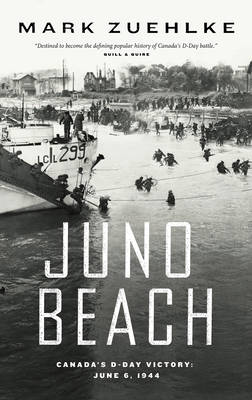
- Retrait gratuit dans votre magasin Club
- 7.000.000 titres dans notre catalogue
- Payer en toute sécurité
- Toujours un magasin près de chez vous
- Retrait gratuit dans votre magasin Club
- 7.000.0000 titres dans notre catalogue
- Payer en toute sécurité
- Toujours un magasin près de chez vous
26,95 €
+ 53 points
Description
On June 6, 1944 the greatest armada in history stood off Normandy and the largest amphibious invasion ever began as 107,000 men aboard 6,000 ships pressed toward the coast. Among this number were 18,000 Canadians, who were to land on a five-mile long stretch of rocky ledges fronted by a wide expanse of sand. Code named Juno Beach. Here, sheltered inside concrete bunkers and deep trenches, hundreds of German soldiers waited to strike the first assault wave with some ninety 88-millimetre guns, fifty mortars, and four hundred machineguns. A four-foot-high sea wall ran across the breadth of the beach and extending from it into the surf itself were ranks of tangled barbed wire, tank and vessel obstacles, and a maze of mines. Of the five Allied forces landing that day, they were scheduled to be the last to reach the sand. Juno was also the most exposed beach, their day's objectives eleven miles inland were farther away than any others, and the opposition awaiting them was believed greater than that facing any other force. At battle's end one out of every six Canadians in the invasion force was either dead or wounded. Yet their grip on Juno Beach was firm.
Spécifications
Parties prenantes
- Auteur(s) :
- Editeur:
Contenu
- Nombre de pages :
- 352
- Langue:
- Anglais
Caractéristiques
- EAN:
- 9781553650911
- Date de parution :
- 08-04-05
- Format:
- Livre broché
- Format numérique:
- Trade paperback (VS)
- Dimensions :
- 157 mm x 236 mm
- Poids :
- 639 g

Les avis
Nous publions uniquement les avis qui respectent les conditions requises. Consultez nos conditions pour les avis.






